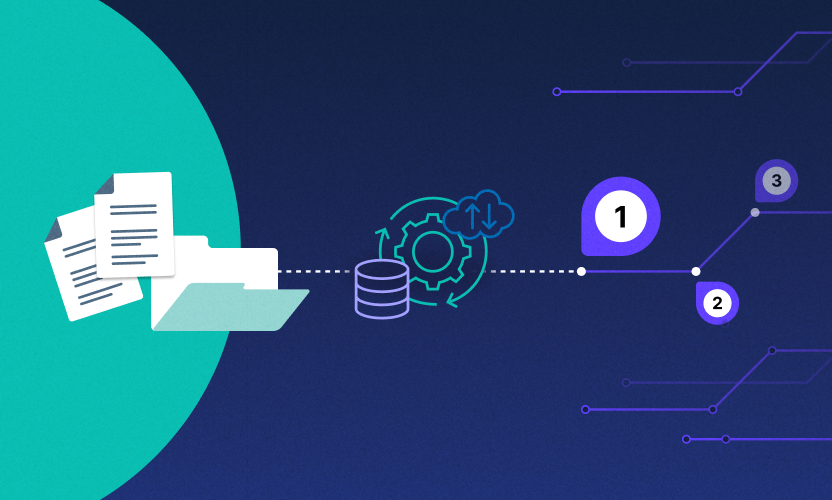
Fact vs. Fiction: Construction CDEs and Interoperability
A number of software packages offer data storage in the cloud. Convenient? Yes, however, the data resides in its own silo which can make it difficult to manage – from security with a clear audit history, to accessibility to making sure the latest content is available to project stakeholders. A true common data environment (CDE), keeps and protects all that content in a single, secure repository in the cloud with integrations to applications.
Here are a few fictions related to construction data in the cloud and the facts that dispel them.
Fiction: Dealing with external users throughout the bidding process is virtually impossible without using email and/or FTP.
Fact: A CDE allows for the for secure sharing of documents in a single platform
The pre-construction process can become nightmarish if FTP is used to provide bid documents and receive them back through email. Frustrating, because connectivity interruptions can turn an FTP download into an all-day affair, while searches through the Inbox for incoming bids can lead to confusion, lost information, and lost time – all while trying to keep out prying eyes. Here’s how it works in a CDE.
Sharing Bid Documents
With the advent of BIM, bid packages are becoming larger than ever which can affect download speeds. By sending unique links to each bidder, downloads are quick and secure. A direct connection to the cloud means that bandwidth interruptions become a non-issue – the download pauses, then resumes once the connection has been restored.
Managing Incoming Bids
The ability for vendors to place estimates directly into a secure CDE means increased productivity. Period. By sending upload links, you allow each vendor to drag and drop their tenders into a pre-assigned folder. Adding expiry dates ensures no bids are received after the deadline.
Dealing with External Users
When accepting and sharing information with external sources, security becomes imperative. In a truly collaborative and secure CDE, permissions and rights are assigned based on whether a user is internal(employee) or external (supply chain).
Fiction: Protected data equals an inflexible work environment
Fact: A CDE can provide content security and governance from any work location
Working from home against deadlines with cumbersome data access often leads users to find ways to bypass restrictions – it’s human nature. External drives or personal cloud products get used to download files on unprotected laptops and no data governance, (i.e. sharing permissions, data lifecycle management, etc.) policies can be applied. This can become extremely risky.
In a CDE, the work environment is the same whether working from home or the office. That means a direct connection to work folders, with the appropriate view into the project (thanks to the ability to break waterfall permissions) and all without VPN.
For example, when bids come in, the quantity surveyor has access. As the winning bid moves through the workflow to become the basis for the contract, permissions, then shift to other stakeholders. When this kind of fluidity exists, there’s no need for risky behavior – data stays where it lives and where it’s protected and governed and the work gets done.
Fiction: High speed internet connectivity is needed on the site to collaborate effectively
Fact: some connectivity is required, but it doesn’t have to be high speed or always available
By syncing files to laptops or mobile devices for offline access, productivity can continue uninterrupted in the field. Files sync back to the cloud once within wifi or cellular range.
Another option is to cache frequently-accessed content to a storage device in the cabin. In this setup, users get very fast access to their content without tying up bandwidth. Performance is further optimized via a delta sync between the cloud and site cache. This means only the small bits of information that have changed get uploaded instead of the entire file, so there’s no drag on the system as it’s all happening in the background.
Meanwhile, users are getting super fast access to the latest and greatest information, mitigating rework and staying true to their workflow. These types of virtualized appliances can be easily installed at the cabin or pre-built and shipped there, ready to deploy in minutes either way.
Fiction: There’s no real ROI in investing in a CDE
Fact: Construction companies experience increased ROI virtually throughout every phase of every project when implementing a CDE
Smart IT investments pay off in increased productivity and increased profits. From increased efficiency and reduced rework, to time saved locating documents for the all-important closeout, the savings can be applied directly to the bottom line. Add to that, a shortened learning curve contributing to uninterrupted productivity and the cost savings continue to add up. When studies show that rework can represent anywhere from 4-6 percent of the total value of a project, much of this can be eliminated with the implementation of a proper CDE.
You can listen in as we bust these and other myths in the Fact vs Fiction webinar, or learn more about CDEs by reading our Spec for Success.






